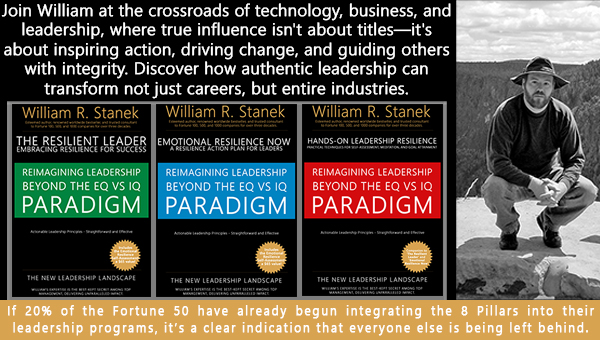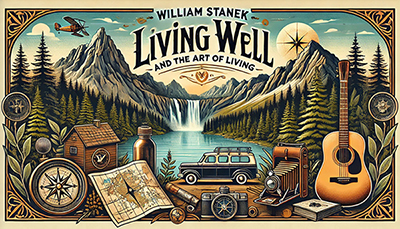
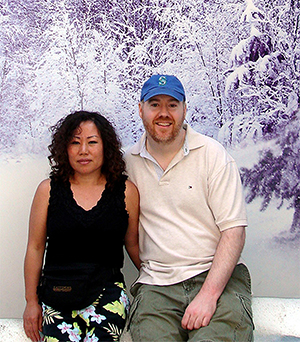
Spotlight on Life's Milestones
Life’s defining moments shape who we are and the paths we take. In this series, William and Hui Cha Stanek invite you to reflect on pivotal milestones, celebrating the journey and the lessons learned along the way.

Transform your life with practical wisdom. Discover William Stanek's 'Living Well' series—your guide to a balanced and fulfilling life.
Discover William Stanek's Exclusive Art Collection
Explore and purchase the stunning art featured on this site. Own a piece of William Stanek's unique and captivating artwork today!
(April 28, 2025) Conservation Milestones: Living in Harmony with Nature
In an era where the impact of human activity on the planet is more evident than ever, the milestones we achieve in conservation and sustainability are crucial not only for our well-being but for the survival of the Earth itself. These milestones—whether they involve adopting sustainable practices, advocating for environmental protection, or educating others about the importance of conservation—are steps toward living in harmony with nature. They are the actions we take to ensure that future generations inherit a planet that is vibrant, diverse, and capable of sustaining life. In this article, we’ll explore the significance of conservation milestones, how they contribute to a life in balance with the Earth, and the responsibility we all share in protecting the natural world.
The Awakening: Becoming Aware of Our Environmental Impact
The journey toward conservation often begins with a moment of awakening—a realization that our actions have a direct impact on the environment and that we have a responsibility to protect the planet. This awareness is the first milestone in the journey of conservation, one that often leads to a profound shift in how we view our relationship with nature.
For Hui Cha and me, this awakening came early in our lives. Growing up, we both spent a significant amount of time outdoors, exploring forests, rivers, and mountains. These experiences fostered a deep love and respect for nature, but it wasn’t until we witnessed firsthand the damage that human activity can cause—deforestation, pollution, the loss of biodiversity—that we truly understood the urgency of conservation. This realization was a turning point, one that ignited our commitment to living in a way that minimizes our impact on the environment and protects the natural world.
Our journey of conservation began with small, conscious changes in our daily lives—reducing waste, conserving water, and making more sustainable choices in our consumption. These initial steps were relatively simple, but they marked a significant shift in our mindset. We began to see ourselves not just as consumers, but as stewards of the Earth, responsible for the health and well-being of the planet.
This milestone of awareness is crucial because it lays the foundation for all future conservation efforts. Once we become aware of our impact on the environment, we can no longer ignore the consequences of our actions. We are compelled to take responsibility, to make changes in our lives, and to advocate for the protection of the natural world.
Adopting Sustainable Practices: The Milestones of Daily Action
Once we become aware of our environmental impact, the next milestone in our conservation journey is the adoption of sustainable practices. These are the actions we take in our daily lives to reduce our ecological footprint, to conserve resources, and to live in a way that is in harmony with nature.
For us, adopting sustainable practices has been a gradual process, one that involves continuous learning, adaptation, and commitment. One of the first steps we took was to reduce our reliance on single-use plastics—a major contributor to pollution and environmental degradation. We began by eliminating plastic bags, bottles, and packaging from our lives, opting instead for reusable alternatives. This simple change had a profound impact, not only in reducing waste but also in raising our awareness of the broader issue of plastic pollution.
Another significant step was the decision to minimize our energy consumption. We made a conscious effort to reduce our use of electricity and fossil fuels, investing in energy-efficient appliances, switching to renewable energy sources, and making our home more energy-efficient. These changes required an upfront investment, but the long-term benefits—both for the environment and for our energy bills—were well worth it.
Water conservation has also been a key focus of our sustainable practices. We’ve implemented water-saving measures such as low-flow faucets and showerheads, rainwater harvesting, and mindful water use in our garden. These efforts have not only reduced our water consumption but have also deepened our appreciation for this precious resource, reminding us of the importance of protecting our planet’s water supplies.
As we adopted these sustainable practices, we realized that each small action, when multiplied across millions of people, can have a significant impact on the environment. These milestones of daily action are not just about reducing our own footprint; they are about contributing to a collective effort to protect the Earth. They are reminders that conservation begins with the choices we make every day, and that each of us has the power to make a difference.
Advocating for Conservation: The Milestone of Public Engagement
While individual actions are essential, the next milestone in the journey of conservation is advocacy—using our voice and influence to promote environmental protection and to encourage others to take action. Advocacy is about raising awareness, educating others, and pushing for policies and practices that protect the environment. It’s about moving beyond personal responsibility to engage with the broader community and to inspire collective action.
For Hui Cha and me, advocacy has become a central part of our conservation efforts. Through our work as photographers and artists, we’ve used our creative talents to capture the beauty of the natural world and to highlight the threats it faces. Our photographs of pristine landscapes, endangered species, and the effects of environmental degradation have been powerful tools in raising awareness and inspiring others to take action.
We’ve also been active in public speaking, writing, and participating in environmental campaigns. Whether it’s giving talks at schools, writing articles, or supporting conservation organizations, we’ve sought to use our platform to educate others about the importance of conservation and to advocate for policies that protect the environment. This work has been deeply fulfilling, as it has allowed us to connect with like-minded individuals and organizations, to contribute to the broader conservation movement, and to make a tangible impact on the issues we care about.
One of the most rewarding aspects of advocacy is seeing the ripple effect it creates. By raising awareness and inspiring others to take action, we’ve seen how our efforts have led to real change—whether it’s a community adopting more sustainable practices, a school starting an environmental education program, or a policy being implemented to protect a critical habitat. These milestones of public engagement are a powerful reminder that collective action is essential for the success of conservation efforts, and that each of us has a role to play in protecting the planet.
The Responsibility of Conservation: Living in Harmony with the Earth
The milestones we achieve in conservation are not just about protecting the environment; they are about living in harmony with the Earth. This means recognizing that we are part of a larger ecosystem, that our well-being is intimately connected to the health of the planet, and that we have a responsibility to care for the Earth as stewards, not as exploiters.
For us, this sense of responsibility has been a guiding principle in our lives. It’s influenced the choices we make, the way we live, and the work we do. We’ve come to see conservation not just as an obligation, but as a way of life—one that brings us closer to nature, deepens our connection to the world around us, and enriches our lives in countless ways.
One of the most profound lessons we’ve learned on our conservation journey is the importance of balance. Living in harmony with the Earth means finding a balance between our needs and the needs of the planet. It means recognizing that our actions have consequences, that the resources we consume are finite, and that we must find ways to live sustainably if we are to ensure a future for ourselves and for future generations.
This sense of balance has guided us in our personal and professional lives, leading us to make choices that reflect our commitment to conservation. It’s influenced everything from the way we travel—choosing eco-friendly options and minimizing our carbon footprint—to the way we create art—using sustainable materials and highlighting environmental themes. It’s also shaped our relationships with others, encouraging us to share our knowledge, to support environmental causes, and to inspire others to live more sustainably.
Living in harmony with the Earth is not always easy, especially in a world where convenience and consumption often take precedence over sustainability. But it’s a journey worth taking, one that brings us closer to nature, to ourselves, and to the communities we are part of. It’s a journey that reminds us of our interconnectedness with all living things and of the responsibility we have to protect the planet for future generations.
A Call to Action: Embrace the Milestones of Conservation
Conservation is a journey marked by important milestones—awareness, action, advocacy, and responsibility. By embracing these milestones, we can live in harmony with the Earth, protect the environment, and ensure a sustainable future for all.
Here are a few steps you can take to embrace the milestones of conservation:
-
Raise Awareness: Begin by educating yourself about the impact of your actions on the environment. Become aware of the issues facing the planet and consider how you can reduce your ecological footprint.
-
Adopt Sustainable Practices: Take steps to incorporate sustainable practices into your daily life. Whether it’s reducing waste, conserving energy, or choosing eco-friendly products, small changes can make a big difference.
-
Advocate for Conservation: Use your voice to promote environmental protection. Engage with your community, support conservation organizations, and advocate for policies that protect the environment.
-
Live in Harmony with Nature: Embrace a lifestyle that reflects your commitment to conservation. Seek a balance between your needs and the needs of the planet, and make choices that support the well-being of the Earth.
-
Inspire Others: Share your knowledge and passion for conservation with others. Inspire your family, friends, and community to take action and to live more sustainably.
-
Support Conservation Efforts: Get involved in local or global conservation efforts. Whether it’s volunteering, donating, or participating in environmental campaigns, your support can make a significant impact.
Conservation is not just about protecting the environment; it’s about living in harmony with the Earth and ensuring a sustainable future for all. By embracing the milestones of conservation, you can contribute to the well-being of the planet and create a legacy of stewardship and care.
Embrace the milestones of conservation, live in harmony with nature, and continue on your journey of living well.
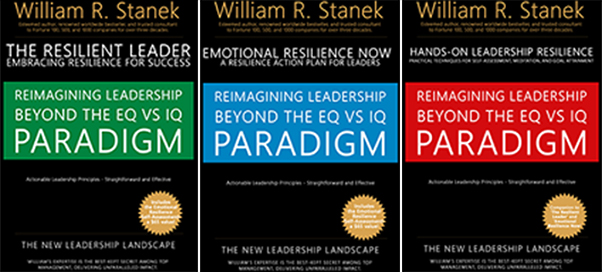
Join William at the crossroads of technology, business, and leadership, where true influence isn't about titles - it's about inspiring action, driving change, and guiding others with integrity. Discover how authentic leadership can transform not just careers, but entire industries.
Bring Inspiration Home
Enhance your space with William Stanek's evocative art. Each piece is crafted to inspire and uplift your everyday life.
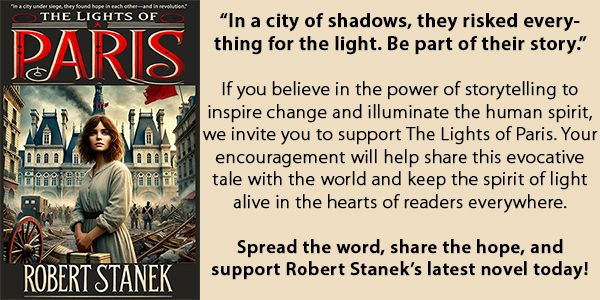
Support The Lights of Paris by Robert Stanek, William Stanek's pen name! Through vivid historical detail and deeply moving character stories, Robert takes readers on an unforgettable journey through one of history’s most transformative times.
